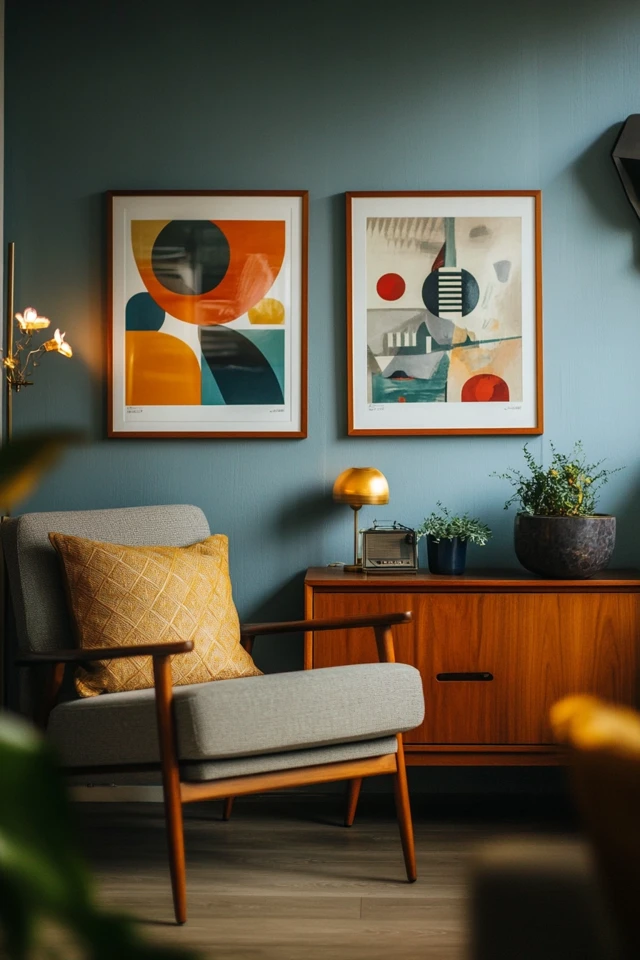Retro posters are a powerful yet understated way to amplify the mid-century modern aesthetic in your home. These vibrant and nostalgic works of art capture the essence of the mid-20th century with bold typography, geometric patterns, and rich, earthy tones. From vintage travel advertisements to abstract graphic designs, retro posters provide a unique opportunity to add personality and authenticity to your space.
I’ll never forget the first time I found a retro travel poster for my living room—a 1960s print promoting Palm Springs, complete with minimalist palm trees and a sunburst. As soon as it was framed and hung above my teak sideboard, the room transformed into a warm, nostalgic retreat. Retro posters aren’t just decorations; they’re conversation pieces that evoke the spirit of an iconic design era while telling a story about your personal style.
In this guide, we’ll explore how to incorporate retro posters into mid-century modern design seamlessly, making them the focal point of your space. Whether you’re starting with a blank wall or enhancing an already curated room, retro posters can take your mid-century modern décor to the next level.
The Perfect Design Addition
Why are retro posters such a great fit for mid-century modern interiors? The answer lies in their shared roots. Both retro posters and mid-century modern design emerged during the same era and reflect the same principles: clean lines, bold color palettes, and a focus on functionality with flair.
Retro posters provide a splash of color and visual interest without overwhelming the simplicity of mid-century design. They’re also highly customizable, allowing you to choose prints that resonate with your personality—whether it’s a vintage film poster, an abstract composition, or a retro advertisement.
Incorporating retro posters into your mid-century modern space not only adds authenticity but also creates a cohesive aesthetic, bridging furniture, lighting, and accessories into a unified, eye-catching design.
Why Retro Posters Work So Well with Mid-Century Modern
1. Bold Colors and Geometric Patterns
Retro posters often feature the same bold, earthy tones and geometric patterns that define mid-century modern design. Mustard yellow, burnt orange, olive green, and teal are common hues, perfectly complementing the warm woods and minimalist furniture typical of the style.
Example: A geometric print in teal and orange hung above a walnut credenza ties together the space with a pop of vintage charm.
2. Clean, Minimalist Layouts
Much like mid-century modern furniture, retro posters emphasize simplicity and balance. Their clean layouts and striking focal points align perfectly with the uncluttered aesthetic of mid-century interiors.
Tip: Choose posters with minimalist designs, such as abstract shapes or vintage advertisements with bold typography, for a harmonious look.
3. Timeless Themes
Many retro posters focus on timeless themes like travel, leisure, and innovation, which resonate with the optimistic spirit of the mid-century modern era. Posters celebrating cities, cars, or space exploration add depth and nostalgia to your décor.
Example: A vintage travel poster for Italy or Palm Springs can bring a sense of wanderlust to your space while tying in mid-century modern elements.
How to Incorporate Retro Posters: Step-by-Step
Step 1: Choose the Right Posters
- Look for posters that reflect your personality or interests while staying true to the mid-century aesthetic. Common themes include:
- Travel destinations
- Vintage advertisements (for beverages, cars, or appliances)
- Abstract geometric art
- Retro movie or music posters
Tip: Stick to posters with bold colors and clean designs to ensure they complement your mid-century modern furniture and accessories.
Step 2: Select the Perfect Frames
- Framing is crucial for showcasing retro posters in a mid-century modern space. Opt for sleek, minimalist frames in materials like wood, metal, or black matte. Thin frames with clean lines work best to maintain the retro vibe.
Example: A black frame for a bold, colorful poster or a walnut frame for a vintage travel print will enhance the mid-century aesthetic.
Step 3: Plan Your Layout
- Decide how you want to display your posters. Here are a few options:
- Single Statement Piece: Hang one large poster above a sofa, bed, or sideboard to create a striking focal point.
- Gallery Wall: Arrange a collection of smaller posters in a cohesive layout. Use matching frames for a uniform look or mix and match for a more eclectic feel.
- Layering: Prop smaller framed posters on a console table or bookshelf for a more casual, lived-in look.
Design Tip: When creating a gallery wall, maintain consistent spacing (2–3 inches between frames) for a polished result.
Step 4: Coordinate with Your Furniture
- Place retro posters near mid-century modern furniture to create a cohesive design. For example:
- Hang a vintage film poster above a low-profile sofa.
- Pair a geometric print with a sleek, tapered-leg sideboard.
- Add a travel poster to a workspace featuring a minimalist mid-century desk.
Tip: Use the colors in your posters to guide your choice of accessories, like throw pillows or rugs, for a unified look.
Step 5: Mix with Other Décor
- Complement your retro posters with other mid-century elements, such as starburst clocks, ceramic vases, or arc lamps. This will create a layered, dynamic space that feels curated and complete.
Picture Gallery
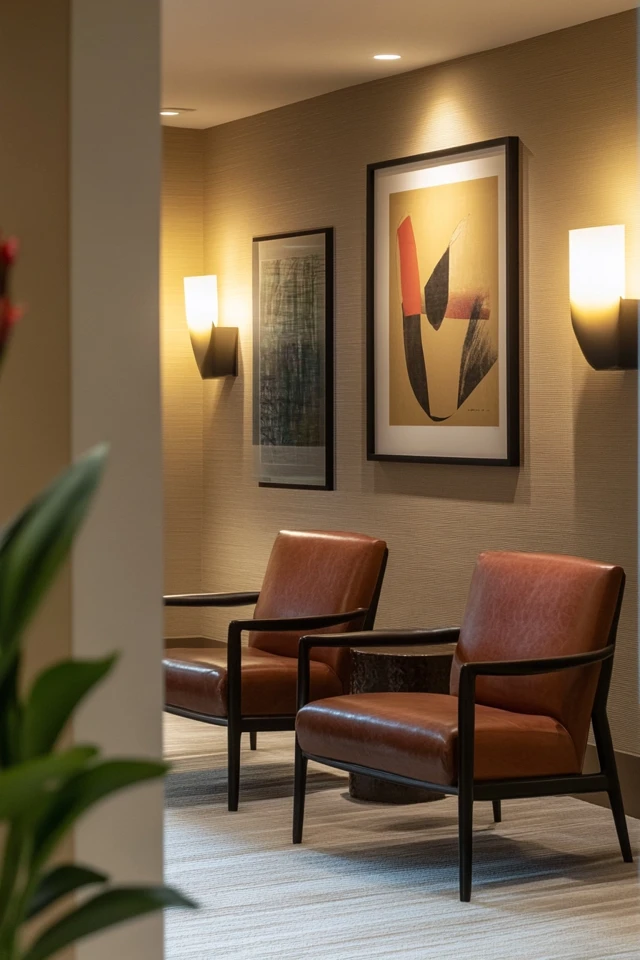
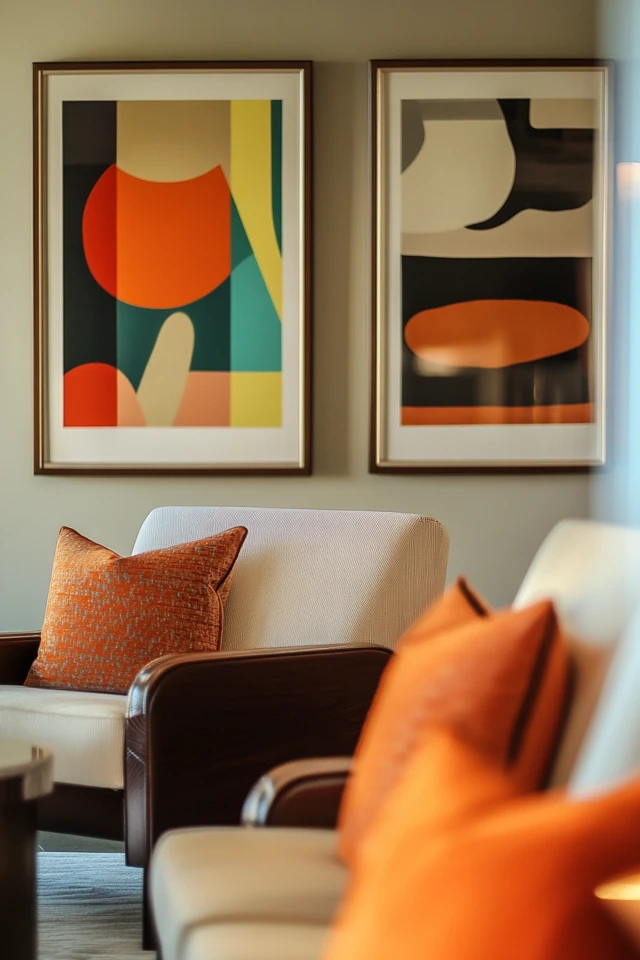
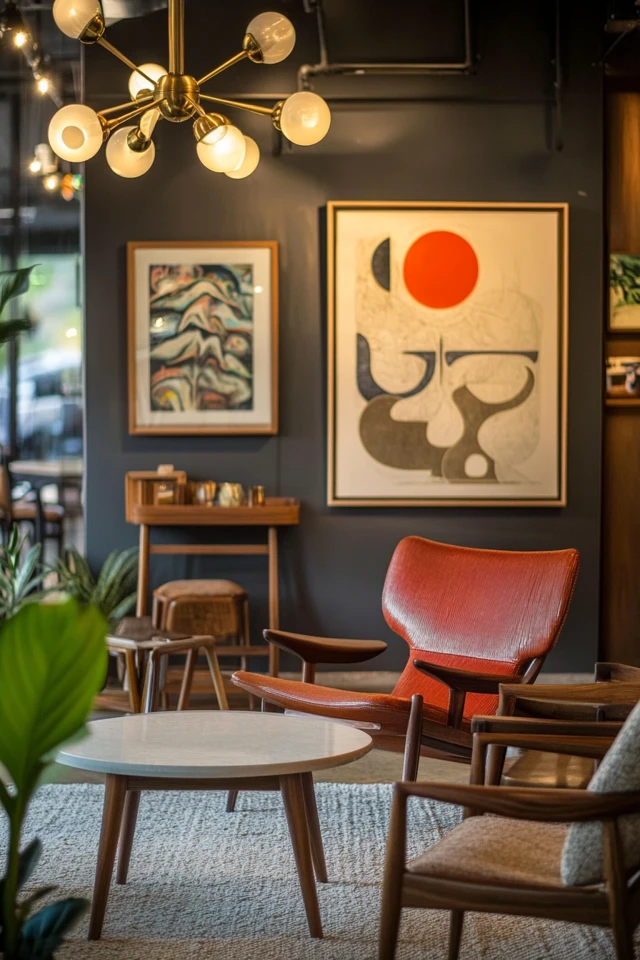
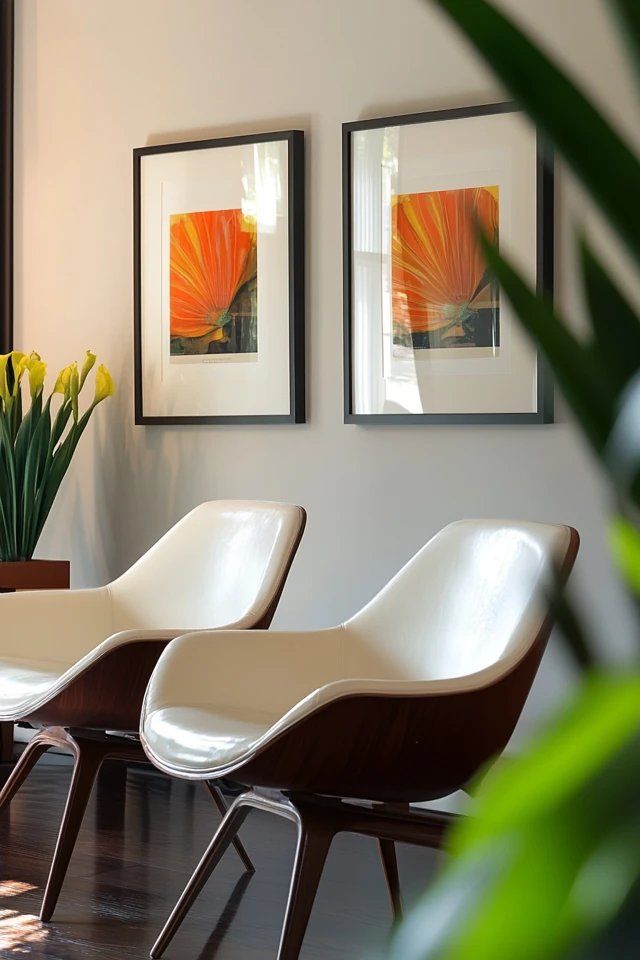
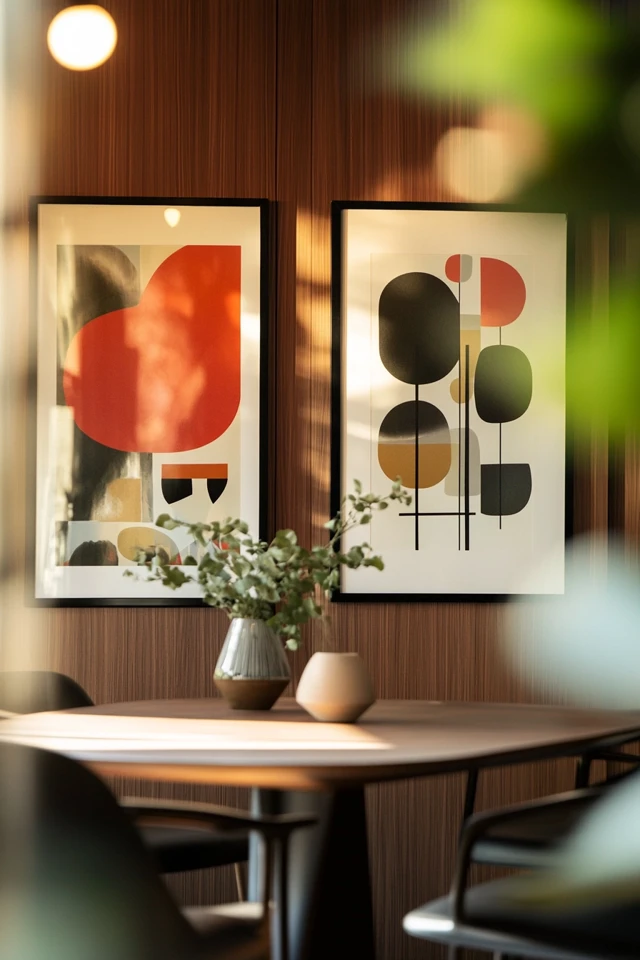
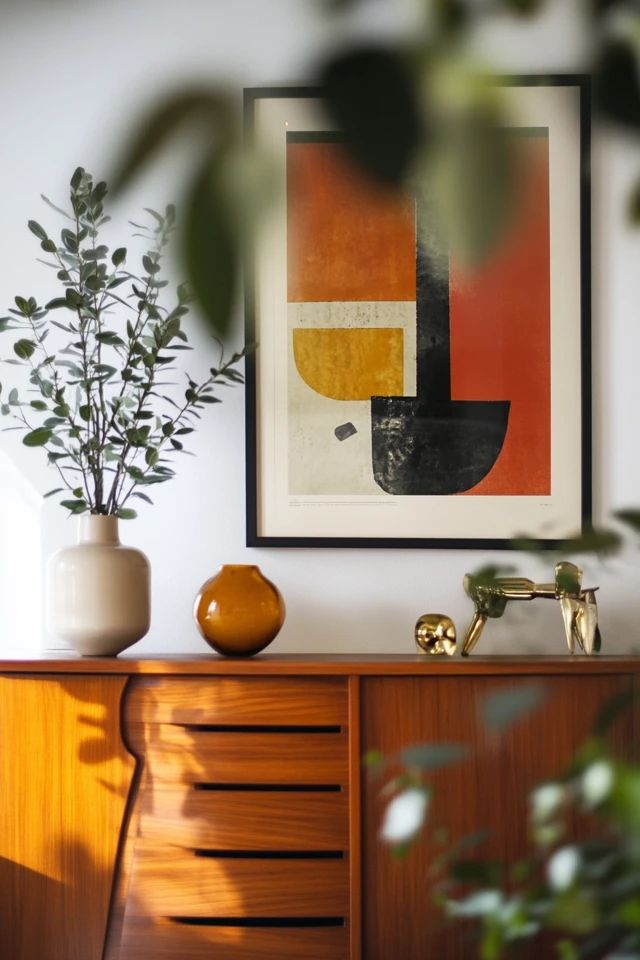

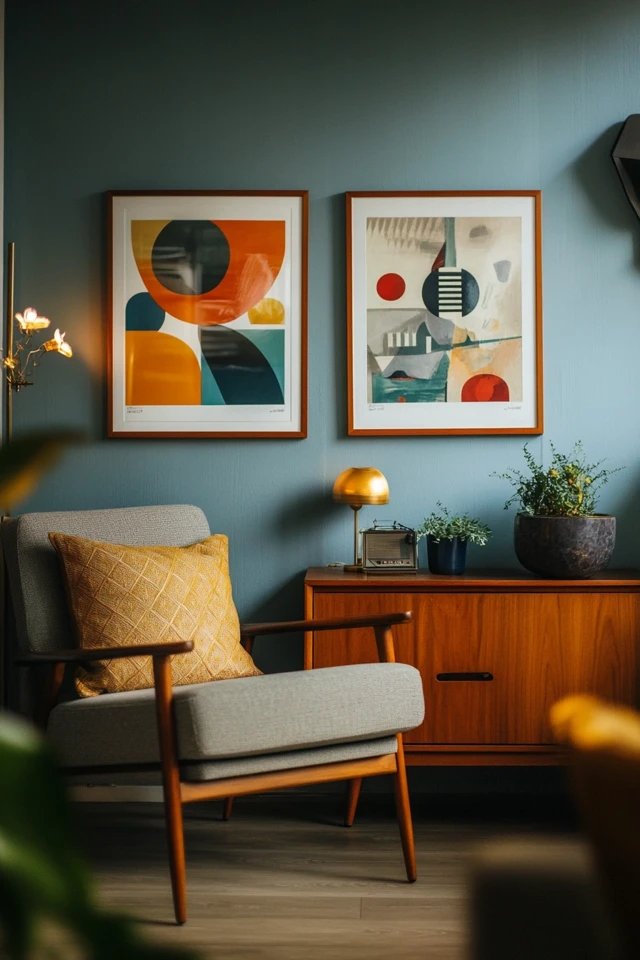
FAQ Section
1. Where can I find authentic retro posters?
Check out thrift stores, flea markets, or online platforms like Etsy, eBay, or 1stDibs for authentic vintage posters. Reproductions are also widely available from retailers specializing in mid-century décor.
2. What size poster works best in a mid-century modern space?
It depends on your layout! Large posters work well as statement pieces, while smaller ones are perfect for gallery walls or tabletop displays.
3. Should I match my posters to my furniture?
It’s not necessary to match perfectly, but coordinating colors and themes can create a cohesive look. For example, choose posters with wood-toned frames to complement walnut furniture.
4. Can I mix retro posters with modern art?
Absolutely! Mixing styles can add visual interest. Pair a bold retro poster with abstract contemporary art to create contrast and depth.
5. How do I prevent damage to vintage posters?
Use UV-protective glass in your frames and avoid hanging posters in direct sunlight to prevent fading. For rare or fragile posters, consider professional framing services.
Variations
- Minimalist Approach: Stick to one or two large posters with clean designs and neutral frames for a streamlined, uncluttered look.
- Maximalist Twist: Create a gallery wall with a mix of retro posters, vintage photographs, and mid-century modern mirrors for an eclectic, layered aesthetic.
- Budget-Friendly Version: Use high-quality reproductions of retro posters instead of originals, and frame them yourself to save on costs.
How to Showcase This Design
Living Room
A large retro poster above your sofa or sideboard instantly elevates your living room while adding color and personality.
Home Office
A gallery wall of vintage travel or innovation posters can create an inspiring and motivational workspace.
Dining Room
Hang retro food or beverage advertisements in your dining area to evoke a nostalgic, mid-century café vibe.
Conclusion
Incorporating retro posters into your mid-century modern design is a simple yet impactful way to add personality, color, and nostalgia to your space. With their bold colors, timeless themes, and clean layouts, these posters perfectly complement mid-century furniture and décor. Whether you’re creating a gallery wall or showcasing a single statement piece, retro posters will bring your mid-century modern vision to life. Start curating your collection today, and enjoy the timeless charm they bring to your home!

